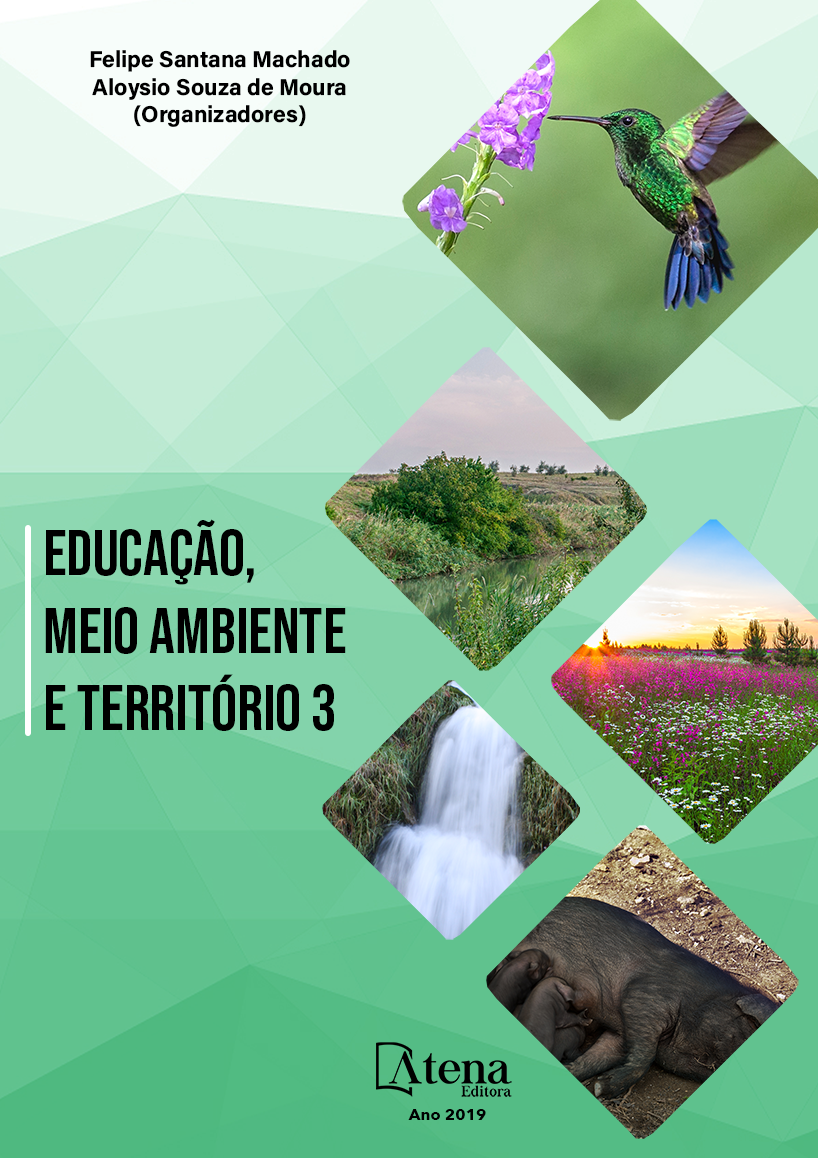
ANÁLISE MULTITEMPORAL DO DESMATAMENTO POR NDVI DO MUNICÍPIO DE RONDON DO PARÁ NOS ANOS DE 2007 E 2017
As taxas de desmatamento na
Amazônia são altas, um dos municípios que
tem significativa contribuição é o de Rondon do
Pará, em função de atividades agropecuárias,
extração vegetal, retirada da madeira ilegal e
mineração. Os índices de desflorestamento
podem ser facilmente detectados pelo
sensoriamento remoto e em particular, pelo
Índice de Vegetação por Diferença Normalizada
NDVI. Objetivou-se neste trabalho avaliar a
evolução temporal da mudança do uso do
solo, utilizando o NDVI no período de 2007 e
2017. Para o pré-processamento, utilizou-se
imagens obtidas pelo sensor TM do satélite
Landsat 5 e o sensor OLI Landsat 8 com nuvens
inferiores a 10%. No processamento utilizouse
a metodologia de NDVI. Procedeu-se então
a classificação de quatro classes: vegetação
densa; vegetação secundária; gramínea e sem
vegetação. Houve uma diminuição de 30% da
vegetação densa e 10% de gramínea em 2017
comparado ao ano de 2007, e um aumento de
8% de vegetação secundária e 2,5% de sem
vegetação no mesmo período. O NDVI se
mostrou como uma excelente ferramenta na
análise para a avaliação do uso de solo e as
mudanças da cobertura vegetal. Identificando o
desmatamento antrópico do município através
das classes caracterizando assim a devastação,
contribuindo dessa forma com a colocação do
município entre os que mais desmatam.
ANÁLISE MULTITEMPORAL DO DESMATAMENTO POR NDVI DO MUNICÍPIO DE RONDON DO PARÁ NOS ANOS DE 2007 E 2017
-
DOI: 10.22533/at.ed.44219210225
-
Palavras-chave: Sensoriamento Remoto. SIG. Geoprocessamento.
-
Keywords: Remote Sensing. GIS. Geoprocessing.
-
Abstract:
The deforestation rates in the
Amazon are high, one of the municipalities that
has a significant contribution is that of Rondon
do Pará, due to agricultural activities, vegetable
extraction, illegal timber removal and mining.
Deforestation rates can be easily detected by
remote sensing and, in particular, the NDVI
Normalized Difference Vegetation Index. The
objective of this work was to evaluate the
temporal evolution of land use change, using
the NDVI in the period of 2007 and 2017. For
the pre-processing, images obtained by the TM sensor of the Landsat 5 satellite
and the Landsat 8 OLI sensor with clouds of less than 10%. In the processing, the
NDVI methodology was used. Four classes were then classified: dense vegetation;
secondary vegetation; grass and without vegetation. There was a decrease of 30% of
dense vegetation and 10% of grass in 2017 compared to 2007, and an increase of 8%
in secondary vegetation and 2.5% in vegetation in the same period. The NDVI proved
to be an excellent tool in the analysis for the evaluation of the soil use and the changes
of the vegetal cover. Identifying the anthropic deforestation of the municipality through
the classes thus characterizing the devastation, thus contributing to the placement of
the municipality among those who most deforest.
-
Número de páginas: 15
- JULIANA FONSECA CARDOSO
- ISABELA LOIANE CARVALHO TEIXEIRA
- JOSÉ CICERO PEREIRA JÚNIOR
- TAISSA NERY FERREIRA
- DENISON LIMA CORREA


